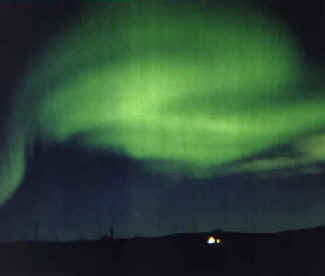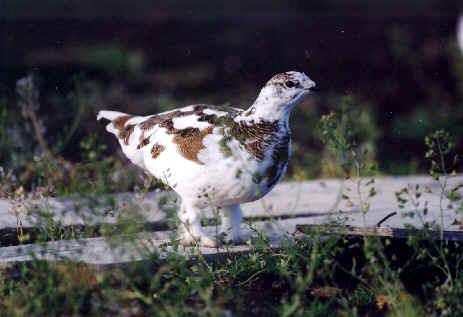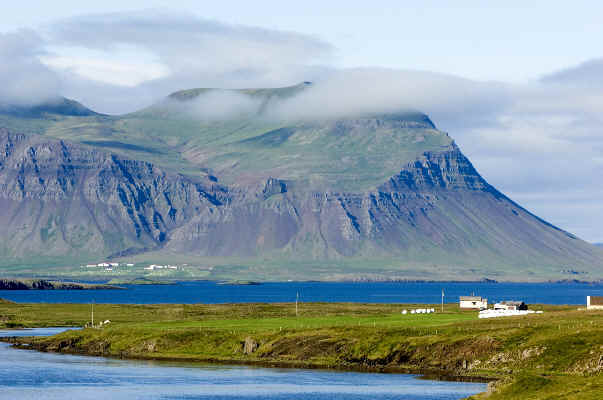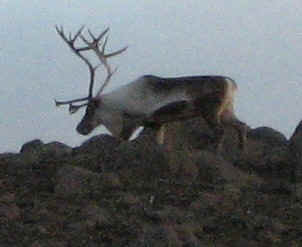
E-mail: font@focusonnature.com
Phone: Toll-free in USA 1-888-721-3555
or 302/529-1876
 |
PO
Box 9021, Wilmington, DE 19809, USA E-mail: font@focusonnature.com Phone: Toll-free in USA 1-888-721-3555 or 302/529-1876 |
A FOCUS ON NATURE TOUR
in Iceland
in
the Autumn
For Birds and Other Nature
on a Fascinating Island
And at
an Excellent Time
for
a Truly Fascinating Display of Nature:
the AURORA BOREALIS, or "Northern Lights",
in
the Night-time Sky

With,
by Day, Some Fine Birding as well.
During our
previous tours at this time of year,
White-tailed
Eagle & Gyrfalcon.
September 25 - October 3, 2015
(tour:
FON/IC-2 '15)
The tour includes a
boat-trip on the Breidafjordur Bay
for the eagles & more.

ROCK PTARMIGAN
photographed during a FONT Iceland tour in October
(photo by Alan Brady)
Links:
A
Complete Iceland Bird-List
Birds
during previous FONT Tours in Iceland
A List & Photo Gallery of European Birds, in 2 Parts:
Part #1: Grouse to Puffin Part #2: Sandgrouse to Buntings
Photos of Birds and Other Nature, Scenery and Culture during previous FONT
Iceland Tours:in Sep/Oct
2013 in June 2012
in June 2009
in
June 2006
another
earlier tour
Some Highlights from Previous FONT Tours in Iceland

Sometimes
during our autumn Iceland tours
we see flocks of Harlequin Ducks along the coast.
This flock is composed entirely of males.
Our Iceland tour follows the FONT tour SW-1 in southern Sweden, Sep 19-25 at a time of an outstanding bird migration that occurs there in autumn. That tour in the past has been a hit!
Participants on the Sweden Tour, who opt to do their trans-Atlantic flights on Icelandair (the airline of Iceland) can easily do it in conjunction with our tour in Iceland.
Others who participate on the
Iceland Tour (without Sweden), would simply fly between
Iceland and North America on Icelandair.
Itinerary Information:
Tour participants should arrive in Iceland, Friday, September 25 (having left North America the evening of Thursday, September 24).
Departure from Iceland would be on
Saturday, October 3
(arriving in North America the same
day).
Flights to/from Iceland are most often be on Icelandair. FONT will arrange
these flights in conjunction with this tour.
A General Overview of the Tour and What can be Seen:
Eight nights would be spent in
Iceland:
two near Reykjavik, (the first & the
last, Sep. 25 & Oct. 2),
one night in the north by a picturesque fjord along a pristine coast,
two nights, elsewhere in the north, from where we'll visit Lake Myvatn, (a very
good place for birds & interesting geology)
one night in Stykkisholmur (by a beautiful bay known as
Breidafjordur),
and two nights along Iceland's southern coast.
In southern Iceland, we'll see glaciers, geysers, & waterfalls, in addition
to birds.
In northern Iceland, there's yet more spectacular scenery with volcanoes, hot
springs, lakes, & a beautiful coastline near the Arctic Circle.
In western Iceland, we'll be, as just noted, at that beautiful bay known as
Breidafjordur, filled with small rocky islands,
seals, and birds. That area is the
stronghold for the White-tailed Eagle in Iceland. We've enjoyed seeing that species during all
of our previous tours.
The nocturnal sky in remote parts of northern & western Iceland
will be dark indeed - away from
any city lights, thus making it an ideal place, on clear nights, to
see some spectacular Aurora Borealis or
"Northern Lights". We've
seen wonderful displays there during our last 6 October tours!
October is an ideal month to see a splendid show of
the Aurora Borealis in Iceland.
The birding in Iceland in
October is very good, and fun, as during that month of migration, in addition to
the resident birds, there are, among the migrants, always some unexpected
vagrants that turn up - having come to Iceland from two directions, either
mainland Europe or from North America. With birds during that season, there
really is the element of the out-of-the-ordinary appearing.
Among the expected birds, however, there are these:
White-tailed Eagles in
various plumages,
the white Gyrfalcon (one time we saw one closely as it caught an
all-white Ptarmigan),
numerous Ptarmigan,
flocks of Pink-footed and other Geese,
huge rafts
of Eiders giving their plaintive calls,
Whooper Swans
and Redwings gathering into groups, about to fly southeast
to Ireland and England,
Eurasian Golden Plovers on lawns of
homes in town,
and both "white-winged gulls"
together at a harbor.

Iceland Gull
Incidentally, the Iceland
Gull does not breed in Iceland. Those that we see at that
harbor, or elsewhere, will have just arrived from further north. (The Iceland
Gull breeds in Greenland.)
There's another gull from further north that could possibly be seen in Iceland in October
- the Ivory Gull. And that would be another nice all-white bird
for us to see.
Other northern waterbirds in Iceland in October could include: Fulmar,
Kittiwake, Gannet, Skua, and a few alcids. Among the latter, Puffin could be
possible along with Murres, Razorbills, and the Black Guillemot.
And, again, in addition to these
birds, there's the culture and interesting natural features already mentioned (such as
the geysers,
hot springs, volcanoes, & glaciers) and some of the most spectacular scenery
anywhere.
(The
word "geyser", you may know, originated in Iceland.)
Collectively, all of these components that we've just referred to should provide the makings for a very fine tour.
Tour starts and ends at the
international airport in Keflavik, Iceland.

Icelandic scenery, photographed during a FONT Tour.
This place, in the photo, is near the bay known as Breidafjordur.
More Details about Places to be Visited
Fri,
Sep 25: Arrival at

A Reindeer
photographed during a FONT Iceland Tour
in October
![]()
Price:
US $3,195, per person, based upon double
occupancy.
Single supplement: US $315.
Includes:
All overnight accommodations.
Ground transportation
A boat-ride (on the big, yet sheltered, Breidafjordur Bay where the eagles
reside).
Most meals: all breakfasts and
lunches.
The services of the FONT tour leader.
Does not include:
Air transportation. Dinners.
Drinks and any items of a personal
nature.
Gratuities.
Focus On
Nature Tours can handle your flight arrangements, to get the best fare.
Tour to be led
by Armas Hill,
who has traveled in Iceland 19 times,
to see and share the birds & other nature.
A deposit of US
$500 is required to register for this tour.